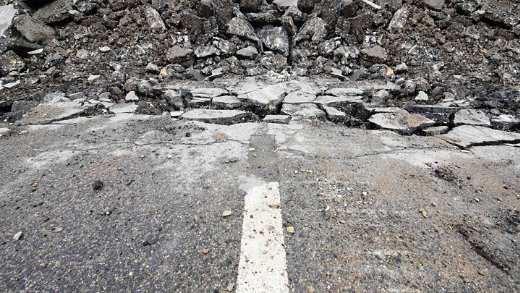Read this article to understand:
- The underlying trends driving the sector’s growth
- The importance of sustainable and digital solutions
- Why scale is the biggest competitive advantage for pest-control companies
In Brussels, pigeons have become a serious issue.
Numbers have exploded in recent years, and the birds are increasingly creating a toxic mess. Their droppings are not just unpleasant: they are acidic and can damage buildings.
Pigeons also bring pathogens. A single bird produces around 12kg of excrement per year and can carry up to 60 diseases.1,2 That’s why the city authorities are battling the surging population with a method that, at first, might sound unconventional: the use of contraceptives in corn kernels.3
Pigeons are not the only creatures cities are grappling with nowadays. Take rats: in New York, city inspectors recorded approximately 60,000 instances of rat activity in 2022, a figure twice as high as in 2021.4
What do these two examples have in common? For one thing, they are both climate related. Climate change has been found to influence both the distribution and the behaviour of pigeons and rats; rising temperatures have been blamed for the recent increase in numbers of both species.
This also speaks to a wider global trend. Pests typically adhere to specific life cycles, but elevated temperatures disrupt these cycles, lengthening their breeding seasons and allowing them to expand geographically and in number.
Like other climate-related impacts, rising pest numbers create big problems for society – as well as health risks, pests can wipe out crops, damage property and disrupt ecosystems. But this trend could also create opportunities for companies that can offer solutions to the problem.
Figure 1: The links between rising temperatures and increasing pest populations
Source: Aviva Investors, March 2024.
“The pest-control industry is responding with innovative new techniques and could see significant growth over the coming years amid rising demand for its services,” says Andrea Carzana, co-manager of the Climate Transition Global Equity strategy at Aviva Investors.
"The industry is becoming ever more critical as its services enable societies to adapt to one of the negative consequences of climate change. Companies providing a strong service in this space could structurally see a higher, and less seasonal, growth profile,” he adds.
Pest in the business
Projections indicate the global pest-control industry will nearly double in size over the next decade, from more than $23 billion in 2023 to over $42 billion in 2032, with climate change, urbanisation and new regulation some of the key drivers.5
Figure 2: Global pest-control market size
Source: Aviva Investors, Spherical Insights, June 2023.6
The relationship between rising temperatures and pest species is complex and can have profound implications for agriculture, human health and natural ecosystems.
First of all, higher temperatures tend to extend breeding seasons, which results in more generations of a species being born per year. It also allows species to expand their geographic range; as temperatures rise, pests can move into areas that were once too cold for them.
For example, according to the European Centre for Disease Prevention and Control, the Asian tiger mosquito is today found in 13 European countries and 337 regions (see Figure 3), compared with eight European countries and 114 regions in 2013.7
Warmer temperatures also increase metabolic rates among pest species, which leads to higher levels of feeding and growth, and can result in more damage to crops, forests and other ecosystems.
Milder winters, meanwhile, can lead to higher survival rates among pests that would normally be killed off by cold temperatures. One example of a pest that is now able to survive winter is the mining moth larvae, which feeds on the Bulgarian pink tomato.9
Lastly, higher temperatures can have an impact on pests’ natural enemies: the predators and parasites that normally help control populations may not be able to adapt as quickly as their prey to the changing conditions.
Figure 3: The Asian tiger mosquito in Europe today

The map shows the current known distribution of Aedes invasive mosquitoes (Ae. aegypti, Ae. albopictus, Ae. atropalpus, Ae. japonicus and Ae. koreicus) in Europe at ‘regional’ administrative level, as of October 6, 2023.
* Countries/regions are displayed at different scales to facilitate their visualisation.
Source: Aviva Investors, European Centre for Disease Prevention and Control and European Food Safety Authority, November 17, 2023.8
Looking for solutions
Climate change is not the only driver of the growth in demand for pest control, however.
Increased international travel and trade has facilitated the spread of pests to new regions
The migration of people from rural to urban areas has led to an upsurge in demand for pest-control services. Urban environments often provide pests with favourable conditions and abundant food sources. Meanwhile, increased international travel and trade has facilitated the spread of pests to new regions, where they are now able to find a foothold due to warming temperatures.
As these kinds of pest species spread, they cause risks to health. Mosquitoes, ticks and fleas are vectors of diseases. Other pests can infiltrate food storage and contaminate food products, resulting in outbreaks of salmonella and E. coli. Termites even pose a threat to the structural integrity of buildings.
Enter pest-control companies, which can address some of these pressing issues. But not all companies use the same techniques. There are four main pest control methods (see Figure 4).
Chemical pest control employs the use of toxic substances to eliminate pests. This is the most used approach in agriculture, to safeguard crops and livestock from pests, diseases and weeds.
However, it is a source of pollution. Chemicals contaminate the air, ground and water, and cause biodiversity loss as well as pest resistance. A study published last year in Nature analysed the most used agricultural pesticides and found out that around 70,000 tonnes of harmful chemicals leach into aquifers each year.11
More eco-friendly options include physical and biological pest controls. Physical pest control entails the use of physical barriers, such as traps and other mechanical methods to capture pests without using harmful chemicals.
Biological pest control, on the other hand, utilises natural predators to manage pest populations. For example, parasitoid wasps are utilised to control caterpillars, which can damage crops like cabbage, broccoli and tomatoes.11
Figure 4: Pest control methods
Chemical
Physical
Biological
Digital
New innovations
The world is seeing a shift towards sustainable and digital practices, and pest control is no exception, witnessing significant technological advancements. Regulation is part of the shift towards a world with fewer toxic chemicals. In June 2022, for example, as part of the European Green Deal, the European Commission proposed to halve pesticide usage by 2030.12
Digital pest control offers real-time remote monitoring, enabling detection of pest activity early on
The pest control industry is introducing cleaner methods. Digital pest control offers real-time remote monitoring, enabling detection of pest activity early on and facilitating prompt responses to pest issues, preventing infestations from spreading. These innovations enhance efficiency and accuracy in pest-control operations, reducing costs and, when chemicals are necessary, enable more precise targeting and minimise their use.
Another benefit of digital pest control is that the data collected can be analysed to offer prevention. Predictive analysis can help understanding of when and where pest infestations are more likely to occur. For example, rodents have been found to be most active at night, with businesses reporting peak activity at 12:24 am.13
“Rentokil, for example, is innovating in this area with non-chemical solutions, such as traps armed with sensors linked to a control room,” says Carzana.
“By using a digital solution, Rentokil avoids unnecessary (and costly) trips to check each trap and is also able to use fewer chemicals. For now this is offered only to the firm’s commercial clients, but the direction of travel is the right one.”
Investment implications
On top of the strong underlying structural drivers, history shows pest control is a resilient industry. This makes intuitive sense: pests are a problem whatever the state of the economy; in times of economic downturn, people may cut back on discretionary spending, but pest-control services remain essential. This means investment in pest-control companies can help lend resilience to a broader equity portfolio.
If you have a pest infestation, you must deal with it whatever the macroeconomic situation
“We like companies with resilient business models that are seeing structural growth in their end markets. The pest-control industry is resilient – if you have a pest infestation, you must deal with it whatever the macroeconomic situation”, says Richard Saldanha, lead manager on the Aviva Investors Global Equity Income strategy.
As pest control is a critical service, its cost is relatively small compared with the potential damage pests cause. As a result, price is often of secondary importance for customers, who will usually accept small yearly price increases if they are getting a quality service, says Carzana.
Investors must also consider regional nuances. For example, in most countries the residential pest-control market tends to be more transactional, and thus more cyclical, than the commercial side (see Figure 5), with the latter offering a better chance of recurring revenues. But this is not necessarily the case in North America, where homeowners are more likely to have problems with termites than elsewhere in the world and are therefore more likely to commit to recurring contracts with pest control firms.
Pest control is becoming a more important service as societies seek to adapt to warming temperatures
The industry as a whole is very competitive and highly fragmented. Globally, there are around 40,000 pest-control companies, and the landscape encompasses both large national enterprises and smaller local players. But the largest firms look best placed to take advantage of the ongoing structural growth drivers and adapt their operations to satisfy the increasing demand for innovative and sustainable control methods.
“The pest-control market reminds me of the waste sector,” says Carzana. “As with waste collection, the biggest competitive advantage is scale, which allows for higher density and translates into profitability. This should benefit large companies such as Rentokil and Rollins.
“The broader point is that pest control is becoming a more important service as societies seek to adapt to one of the negative consequences of warming temperatures. This is the reason why we believe the company has an important role to play in a climate-transition focused equity strategy,” he adds.
Figure 5: Investment opportunities

Source: Aviva Investors, March 2024.



















